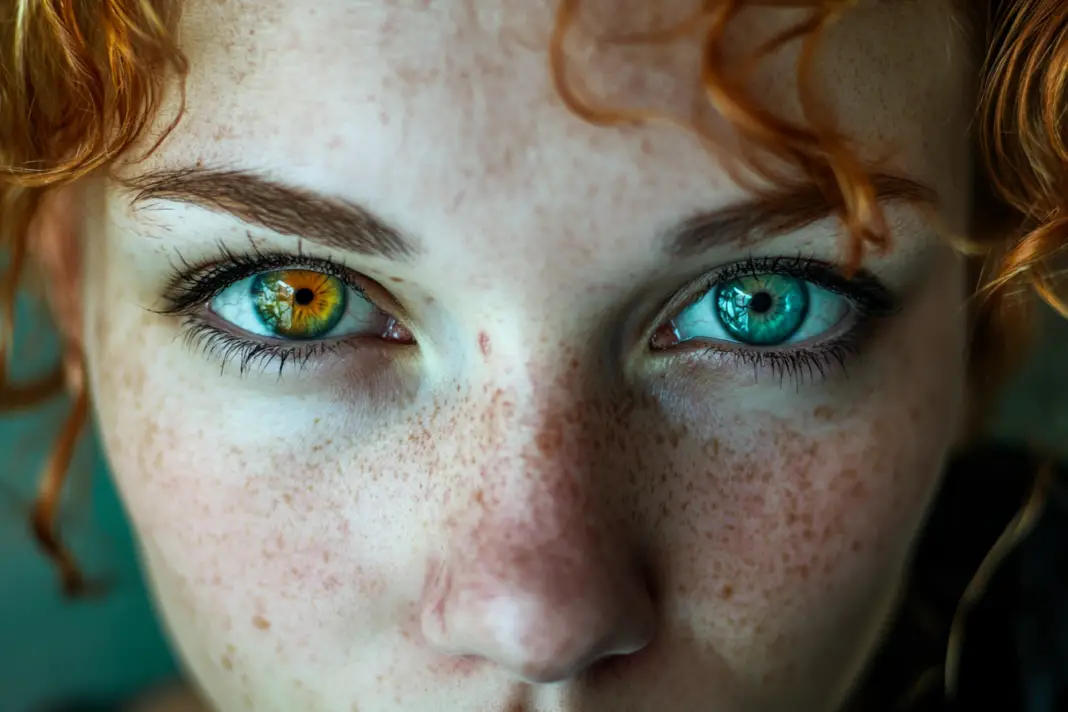When it comes to first impressions, the eyes have it – but not in the way you might think. Recent scientific research has uncovered fascinating connections between eye color, facial features, and how trustworthy we appear to others. While conventional wisdom might suggest that certain eye colors inherently inspire more trust, the reality is far more complex and intriguing.
The surprising truth about brown eyes and trust
Scientific research has revealed an unexpected connection between brown eyes and perceived trustworthiness. Multiple studies have consistently shown that individuals with brown eyes are often rated as more trustworthy than their blue-eyed counterparts. This finding has sparked intense interest in the scientific community, leading researchers to delve deeper into understanding why this perception exists.
Research conducted at several prestigious institutions has demonstrated that brown-eyed individuals, particularly men, consistently receive higher trustworthiness ratings from observers. These findings held true across multiple studies and different cultural contexts, suggesting a fundamental psychological mechanism at work rather than simply cultural bias.
The implications of these findings extend beyond simple social interactions. In professional settings, job interviews, and even political campaigns, these unconscious biases about trustworthiness based on eye color and associated facial features might influence important decisions. Understanding these biases helps us recognize and potentially counteract them in critical situations.
However, the story doesn’t end with eye color alone. Scientists discovered that what makes brown-eyed individuals appear more trustworthy isn’t actually their eye color, but rather the facial features that tend to accompany brown eyes. This revelation has led to a deeper understanding of how we process and interpret facial characteristics when making split-second judgments about others.
Why facial features matter more than eye color
The connection between eye color and trustworthiness isn’t as straightforward as it might seem. Scientists have discovered that specific facial features commonly associated with brown eyes play a crucial role in perceived trustworthiness. These features include broader chins, wider mouths, and more prominent eyebrows, which collectively create an impression of reliability and honesty.
Studies reveal that faces with rounder, wider features are generally perceived as more approachable and trustworthy, regardless of eye color. The shape of the mouth, position of eyebrows, and overall facial structure work together to create an immediate impression of trustworthiness before we even consciously process these details.
Interestingly, when researchers digitally altered photographs to change eye colors while keeping facial features constant, the perception of trustworthiness remained largely unchanged. This groundbreaking discovery demonstrated that our snap judgments about trustworthiness are more influenced by the overall configuration of facial features than by eye color alone.
These findings challenge our preconceptions about the role of eye color in social interactions. Rather than focusing on eye color as a indicator of character, we should consider how various facial features work together to create our immediate impressions of others. This understanding can help us make more informed and less biased judgments in our daily interactions.
Gender differences in eye color perception
The relationship between eye color and perceived trustworthiness manifests differently across genders. Research has shown that the connection between eye color and facial features is particularly pronounced in men, where the contrast between brown-eyed and blue-eyed individuals is most noticeable in terms of perceived trustworthiness.
Studies indicate that male faces show stronger correlations between eye color and facial morphology than female faces. This gender difference suggests that evolutionary factors might have played a role in developing these associations over time.
Women’s facial features demonstrate less variation in perceived trustworthiness based on eye color. This finding suggests that the evolutionary pressures that led to the association between eye color and facial features may have affected men and women differently, possibly due to different social and reproductive pressures throughout human history.
Understanding these gender-based differences in how eye color and facial features interact can help us better comprehend the complex nature of social perceptions and biases. It also raises interesting questions about the role of sexual selection in shaping these characteristics over evolutionary time.
The evolutionary link between eye color and facial structure
Scientists have proposed fascinating evolutionary explanations for the connection between eye color and facial features. This relationship likely emerged through a process called genetic linkage, where genes controlling eye color became associated with genes determining facial structure. This association developed over thousands of years of human evolution.
Research suggests that the genes controlling eye color and facial structure may have evolved together due to sexual selection pressures. This means that certain combinations of features were more successful in attracting mates and passing on genes to future generations.
The prevalence of blue eyes in Northern European populations suggests that this trait must have provided some evolutionary advantage to offset the potential disadvantage of being perceived as less trustworthy. Scientists theorize that blue eyes might have served as a signal of genetic diversity or offered other social or reproductive benefits.
Understanding these evolutionary connections helps explain why certain facial features tend to cluster with specific eye colors. It’s not random chance but rather the result of complex genetic and evolutionary processes that have shaped human appearance over millennia.
How melanin influences perception and personality
Melanin, the pigment responsible for eye color, plays a fascinating role beyond just determining the shade of our eyes. The amount of melanin in the iris influences how we process light and potentially affects various aspects of personality and behavior. This connection between biology and psychology adds another layer to understanding eye color’s influence on social perception.
Studies have shown that melanin levels can affect the development of the frontal lobe, potentially influencing traits such as impulsiveness and sociability. People with different eye colors may process visual information and respond to environmental stimuli in subtly different ways.
The relationship between melanin and personality traits extends beyond simple correlations. Research indicates that individuals with darker eyes tend to exhibit different reaction times and sensitivity to certain stimuli compared to those with lighter eyes. These biological differences might contribute to the development of different behavioral patterns.
While these findings are intriguing, it’s important to note that they represent general trends rather than absolute rules. Individual personality development is influenced by countless factors beyond eye color and melanin levels, including environment, upbringing, and personal experiences.
Cultural differences in eye color perception
The way different cultures perceive and interpret eye color varies significantly around the world. In some societies, certain eye colors are associated with specific personality traits or cultural meanings. These cultural differences highlight how our perceptions of trustworthiness based on eye color are influenced by social and cultural contexts.
Research indicates that in Northern European countries, where blue eyes are more common, the perception of trustworthiness might differ from regions where brown eyes predominate. These cultural variations demonstrate how environmental and social factors shape our interpretations of physical traits.
The prevalence of certain eye colors in different populations has led to the development of unique cultural associations and stereotypes. These cultural beliefs can influence social interactions, relationship formation, and even professional opportunities in various societies around the world.
Understanding these cultural differences is crucial for developing a more nuanced view of how eye color influences social perceptions. It reminds us that many of our assumptions about eye color and personality traits are culturally constructed rather than biologically determined.
The role of eye contact in building trust
Beyond eye color, the way we use our eyes in social interactions plays a crucial role in establishing trust. Eye contact serves as a fundamental component of nonverbal communication, often conveying more about trustworthiness than the color of our eyes. Understanding the significance of eye contact helps explain how we form impressions of others.
Scientific studies have demonstrated that prolonged eye contact is interpreted as a sign of personal connection rather than just conversational engagement. The duration and quality of eye contact can significantly influence how trustworthy someone appears, regardless of their eye color.
The ability to maintain appropriate eye contact is often considered more important for building trust than any particular eye color. This skill involves finding the right balance between engagement and respect, as too much or too little eye contact can create discomfort or mistrust.
Professional environments often emphasize the importance of eye contact in establishing credibility and trust. This focus on behavioral aspects of eye communication suggests that how we use our eyes matters more than their color in building meaningful connections.
Breaking down common stereotypes about eye color
Despite scientific evidence highlighting the complex relationship between eye color and trustworthiness, many stereotypes persist in popular culture. These preconceptions often associate specific personality traits with different eye colors, creating unfounded biases that can influence social interactions and personal relationships.
Research has shown that while certain associations between eye color and personality traits exist, these connections are often more related to facial structure and genetic factors than eye color alone. Understanding this helps challenge common misconceptions about eye color determining character.
The persistence of these stereotypes can have real-world implications, potentially affecting everything from personal relationships to professional opportunities. Recognizing and addressing these biases is crucial for promoting more equitable and accurate perceptions of individuals regardless of their eye color.
Moving beyond these stereotypes requires acknowledging the complex interplay of genetic, biological, and social factors that influence human behavior and personality. Eye color is just one small part of this intricate puzzle, not a definitive indicator of character or trustworthiness.
Practical implications for social and professional life
Understanding the relationship between eye color, facial features, and perceived trustworthiness has practical applications in various aspects of life. These insights can be valuable in professional settings, where first impressions often play a crucial role in relationship building and career advancement.
Studies suggest that awareness of these unconscious biases can help individuals and organizations make more objective decisions in hiring, promotion, and other professional contexts. This knowledge enables more fair and equitable treatment regardless of physical appearance.
In social situations, understanding these perceptions can help people navigate interactions more effectively. While we cannot change our eye color or facial features, we can focus on behavioral aspects that build genuine trust, such as maintaining appropriate eye contact and developing strong communication skills.
Organizations and individuals can use this knowledge to develop more inclusive practices that recognize and counteract unconscious biases related to physical appearance. This approach promotes more meaningful and authentic relationships based on character and actions rather than superficial traits.
The connection between eye color and perceived trustworthiness reveals the complex interplay of genetics, evolution, and social perception in human interactions. While brown eyes may be associated with trustworthy facial features, it’s clear that genuine trustworthiness comes from character and behavior rather than physical traits. As we continue to understand these relationships better, we can work toward creating a society that values individuals based on their actions rather than their appearance.

